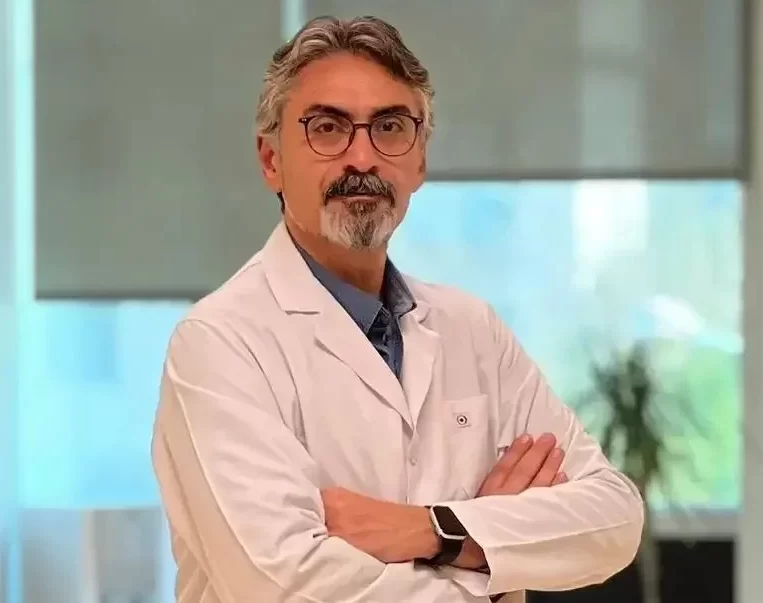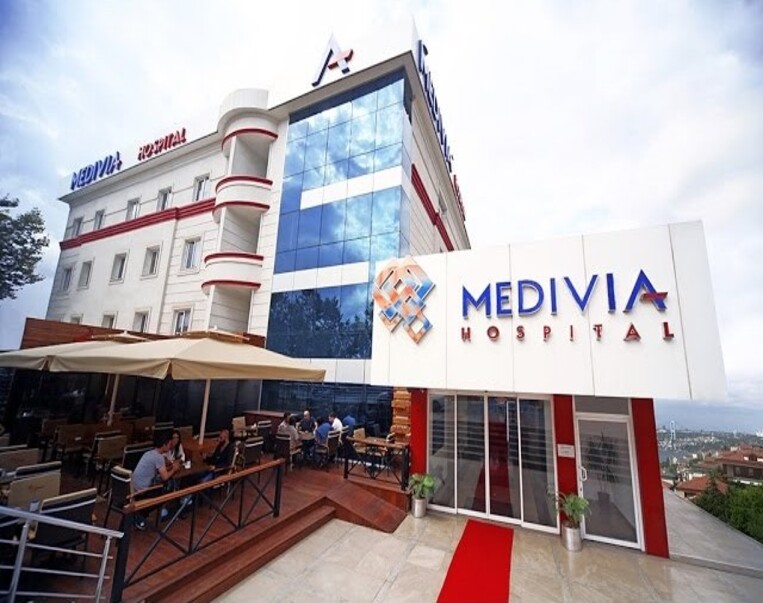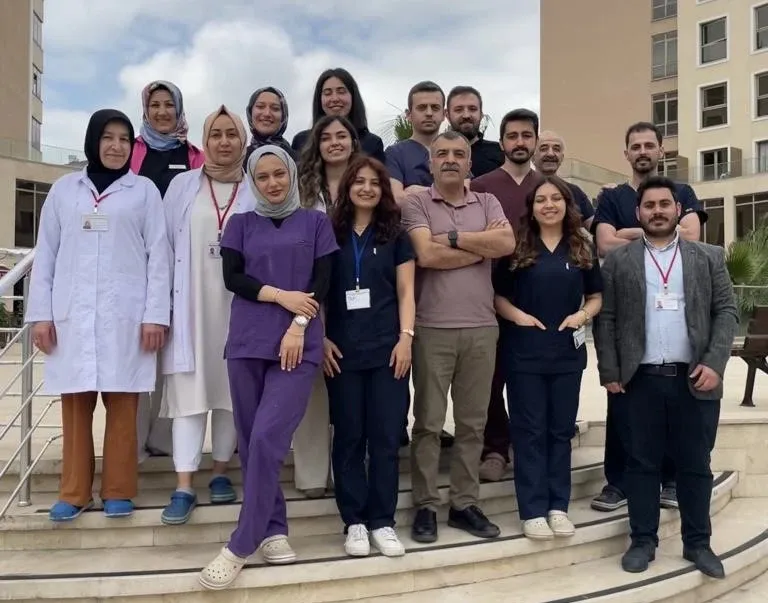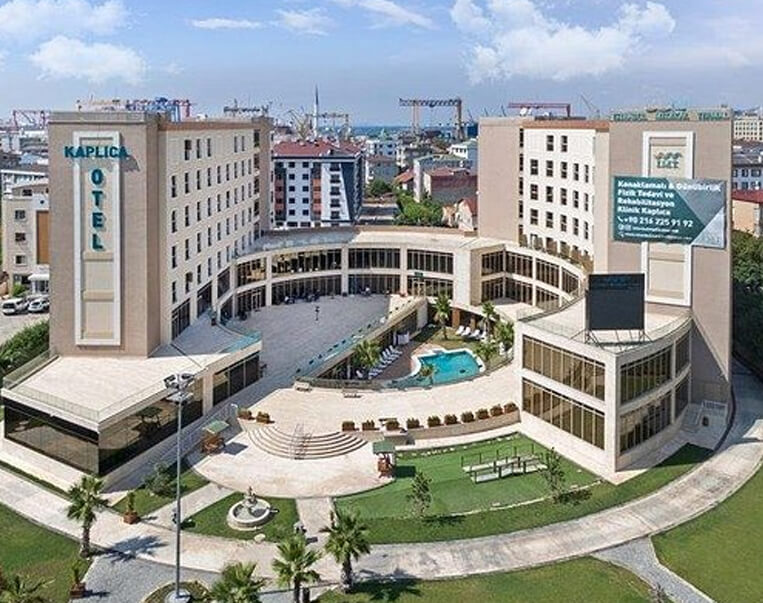Curious About the Lengthening Methods & How they work?
There are 2 basic methods for lengthening, and their combinations depend on your needs and goals.
Learn to choose the best method for you by clicking this link below:

Use our Calculator to Find Out About Your Package Prices

Success comes with Exclusive Care & Physical Therapy
We are here to help you for anything you need with our professional team during lengthening.
Here is a video where you can see how our Physical Therapy Sessions work:
Success comes with Exclusive Care & Physical Therapy
We are here to help you for anything you need with our professional team during lengthening.
Here is a video where you can see how our Physical Therapy Sessions work:

Ready to Start your journey? Reach us now!
Limb Lengthening Surgery in Turkey
How Does the Limb Lengthening Process Work?
Here is a step-by-step guide on your limb lengthening journey!
Why Choose Us?
FixTheHeight values your rights and secrecy. We will make sure you get everything you will ever need throughout your journey. Here is a list of our services that you will be having:
Patient Secrecy
Complication Insurance
Personalized Treatment Plan
Nutrition Support
Medical Hotel and Free Space
Psychological Support
Guaranteed Lengthening Amount
7/24 Assistance
Patient Testimonials
We listed some of our previous patient's experiences with their own words from all around the globe who have become taller with FixTheHeight.

"My experience with leg lengthening surgery was fantastic with FixTheHeight. I had the LON method on my tibias and gained 6 cm in height. The clinic was very modern and offered luxurious accommodations for my recovery, which made the whole process far easier to manage. The physical therapy was well-designed, and I felt like I was getting the best possible care every step of the way. I did encounter a small issue with one of my pins, but the team responded immediately and resolved it without delay. I’m incredibly happy with the results and the care I received, and I would recommend this procedure to anyone interested in enhancing their height."

"I underwent leg lengthening surgery using the LON method in Turkey, gaining 10 cm in height. The journey was not without its challenges, but I am extremely grateful for how the team handled every complication that arose. Initially, I had some issues with pain management during the early stages of recovery, and there were a few days where I experienced more swelling than expected. Thankfully, the medical team acted quickly to adjust my medication and recommended physical therapy techniques to reduce the swelling. Later in the process, I had some difficulty with one of my rods, but Dr. Burc and his team took immediate action, fixing the problem with minimal discomfort. I can't say enough about how professional and attentive everyone was. Their ability to solve problems as they arose gave me peace of mind, and in the end, the 10 cm I gained was completely worth it. I now feel taller and more confident than ever."

"I came to Turkey for my leg lengthening surgery and chose the LON method on my femurs. I gained 8 cm, and the results are amazing. The clinic and facilities were more than I could have hoped for—luxurious, clean, and comfortable. The physical therapy team did an incredible job, ensuring I recovered smoothly and without any complications. I had a small issue with one of my pins early on, but the medical team responded immediately and resolved it with care. Dr. Burc, in particular, was highly skilled and always available to address any questions or concerns. The entire experience was seamless, and I’m thrilled with my new height!"

"I went from the U.S. to Turkey for 4 cm lengthening, and my experience with “Fixetheheight” was absolutely incredible. I had my leg lengthening surgery about 4 months ago, and my surgery went well without any complications. The doctor is knowledgeable and knows what he is doing as he is a PHD. The whole thing, including physiotherapy, is simply amazing and willing to help every step of the way. The first 2 weeks were as painful as I expected. However, after 2 weeks, you feel like a mass amount of pain drops. No single regret for doing the surgery. They're very good at keeping your surgery private, which I really like about them other than the surgery. Please, if anyone is planning on doing leg lengthening, I strongly recommend Fix the “Height” so you don’t experience complications from unqualified orthopedics. Believe me, there are some out there in Turkey, so do your research well, as leg lengthening is a major surgery. Over all, I am very satisfied and can’t wait to fully recover and be able to perform my routines. Thanks !"
Our Partners
Learn More About FixTheHeight's Partner Professor Surgeon and Experienced Medical Team, along with our High-End Hotel and Hospital

Prof. Dr. Halil BURÇ, M.D.
Prof. Burc is an experienced orthopedic surgeon with a career spanning over two decades. He has treated over 100 patients in cosmetic limb lengthening surgeries, along with expertise in total hip and knee prosthesis, deformity correction, and advanced sports medicine procedures.
A member of prestigious orthopedic boards, he has contributed to numerous national and international publications and attended over 50 scientific meetings. Currently, he practices at his private office and holds a position at Beykent University. His career reflects a dedication to innovation and excellence in orthopedic and reconstructive surgery.

Medivia Hospital

Physical Therapy and Medical Team
FixTheHeight takes pride in its highly experienced physical therapy and medical team, who play a crucial role in ensuring the success and safety of every procedure. The team is composed of skilled professionals with years of expertise in rehabilitation, post-operative care, and patient support.
The team’s synchronized efforts with the surgeon guarantee that patients receive consistent, top-quality care at every stage of the process. Together, they form a cohesive unit dedicated to helping patients achieve their goals safely and effectively while maintaining the highest standards of professionalism and care.

Istanbul Medical Thermal Otel
We offer an exclusive accommodation option at a specially designed 5-star thermal hotel in Istanbul, providing everything you need for a comfortable and seamless recovery in one convenient location. This luxurious facility includes SPA services, laundry, three meals a day served either in your room or as an open buffet, and access to healthy thermal drinking water. Nurses and caregivers are available on-site to assist with regular bandage and dressing changes and any medical needs.
Regular doctor visits ensure continuous monitoring, while a dedicated patient representative will guide you throughout your stay and follow up with you. Meals are carefully planned by a dietician and prepared by the hotel’s chef to suit your nutritional needs.
Speak with an Expert Today!
FixTheHeight is a Hera Healthcare project, which is one of the five largest health tourism agencies in Turkey with over thirty years of experience in the health sector.
F.A.Q
Here we listed some of the most frequently asked questions on our patient support line. We answered common questions about our leg lengthening procedures, recovery, and services. Designed to keep you informed and confident, this guide covers everything you need to know. For further assistance, our team is always ready to help!
Do not worry, as FixTheHeight operational team, we are with you throughout the entire process. Please see our patient services section for detailed information.
Yes, the patient must be at least 18 years old for cosmetic lengthening surgeries. The reason behind this is ethical rules and still growing during adolescence. Our age limit for cosmetic lengthening surgery is between the ages of 18-45 since the bone healing is proper and consistent. For deformities and single sided shortnesses, there is no age limit.
As Fix the Height, we provide 2 methods of lengthening surgery which are “LON” and “PRECISE 2” methods. Although the working principles of the methods are the same, there are quite a few differences between the two regarding the comfort of the patient. To summarize, if you are low on budget and fast recovery, LON is your method. If you want to be comfortable and want no devices to be seen from outside, PRECISE 2 is the best option. If the patient wants to lengthen both bones at the same time this is called Quadrilateral Surgeries and it is not recommended to everyone and is not preferred.
Physical therapy is a must as long as the lengthening period continues and after the lengthening for some time. Our experienced physical therapists are ready to help you throughout the process. Please visit this page to learn more about the physical therapy period.
The surgery itself takes about 5 hours, including preparation time, anesthesia and the time it takes to Post-Anesthesia recuperation. After the surgery, the patient stays at the hospital for 4 days and then is transferred to the hotel to start the lengthening after a week from the surgery. 1 cm of lengthening takes 10 days since 1 millimeter is achieved in 1 day. So if your aim is 80 days, the lengthening period would take at least 80 days. It also takes 6 months for the bone to recover fully. The patient can go back to regular activities after 6 months. Also, non-ordinary fast and increased lengthening surgeries affect the healing process negatively. On the other hand, the most positive impact on healing is to do physical therapy exercises after the surgery regularly.
Regardless of the amount of lengthening, you can go back to your normal daily life after 6 months from the surgery. Activities such as professional sports, powerlifting, and heavy fitness are recommended to be continued after at least 1 year from the surgery. Other than that, you can do everything the same as before after 6 months.
The biggest problem that may lead to termination of treatment is infection. In case of any infection caused by or after surgery, it is necessary to terminate or modify the treatment immediately, especially if the combined method has been applied. Another reason is circulatory or nerve-related problems during lengthening. For example, if a person says they can’t feel their feet fully at any time during stretching, this is an important sign. In such cases, treatment should not be continued, and the extension should be terminated.
Apart from this, there are also complications related to the person. Joint movements should be preserved by applying the recommended exercise program. If there is a problem in joint movements, the rehabilitation program is intensified, but if no results are obtained, the treatment can be stopped. In addition, depending on the amount of extension from time to time, the muscles behind the knee or the Achilles tendon behind the ankle may be short, and for this reason, problems such as knee bending, or toe walking may be encountered while walking. In such cases, difficulties may be experienced from time to time in achieving the targeted extension, especially if it cannot be overcome with physical therapy.
F.A.Q (Frequently Asked Questions)
We listed the Frequently Asked Questions by our patients about limb lengthening for you.
Do not worry, as FixTheHeight operational team, we are with you throughout the entire process. Please see our patient services section for detailed information.
Physical therapy and rehabilitation are absolutely necessary after these surgeries. Depending on the procedure applied, muscle weakness and limitation in joint movements may be experienced from time to time. Early physical therapy is very beneficial for the patient to overcome this process quickly.
There is no inappropriate age for deformity. At this point, treatment should be directed by planning whether the deformity will improve with the growth of the person and whether it will worsen. Bone age is very important in planning the treatment, but these treatments can be planned at any age, depending on the degree of deformity.
Although children born with deformity are seen in some hereditary disorders, from time to time later diseases or traumas can also cause deformity.
Regardless of the amount of lengthening, you can go back to your normal daily life after 6 months from the surgery. Activities such as professional sports, powerlifting, and heavy fitness are recommended to be continued after at least 1 year from the surgery. Other than that, you can do everything the same as before after 6 months.
Physical therapy is a must as long as the lengthening period continues and after the lengthening for some time. Our experienced physical therapists are ready to help you throughout the process. Please visit this page to learn more about the physical therapy period.
The biggest problem that may lead to termination of treatment is infection. In case of any infection caused by or after surgery, it is necessary to terminate or modify the treatment immediately, especially if the combined method has been applied. Another reason is circulatory or nerve-related problems during lengthening. For example, if a person says they can’t feel their feet fully at any time during stretching, this is an important sign. In such cases, treatment should not be continued, and the extension should be terminated. Apart from this, there are also complications related to the person. Joint movements should be preserved by applying the recommended exercise program. If there is a problem in joint movements, the rehabilitation program is intensified, but if no results are obtained, the treatment can be stopped. In addition, depending on the amount of extension from time to time, the muscles behind the knee or the Achilles tendon behind the ankle may be short, and for this reason, problems such as knee bending, or toe walking may be encountered while walking. In such cases, difficulties may be experienced from time to time in achieving the targeted extension, especially if it cannot be overcome with physical therapy.
It would be beneficial for people who will have lengthening surgery to know the problems listed below:
- Infection
- Delayed or absent union in the lengthening area
- Clot formation in veins
- Joint stiffness
- Psychological problems
- Scarring at the wound sites
- Severe Pain
Please note that all of these complications can be faced in any orthopedic surgery and can be dealt with, with the intervention of your physician.
If your method is LON:
Yes, you will undergo a small operation after the lengthening is completed which is the external fixator removal. The external fixator part of the device is removed with this operation and the patient is required to rest for only 4-5 days. After the device is removed you will be left with the internal device. This internal device can be taken out after 1,5-2 years from the surgery if the patient wants to with a small surgery. However, it is completely safe to live with the internal rod for your whole life.
If your method is Precise 2:
No, you do not have a mandatory second operation or surgery. After the lengthening and the bone healing is completed, you can give load to your legs and start walking. The Internal device can be taken out after 1,5-2 years from the surgery if the patient wants to with a small surgery. However, it is completely safe to live with the internal device for your whole life.
It depends on the sport you’re doing. However, you should wait at least 1 year for heavy sports such as weightlifting or competitive sports. You can do light sports after 6 months under the supervision of a doctor. You can also train your upper body such as arms, chest, back and shoulders anytime after the surgery except for the abs and below areas.
Sitting workers can do their jobs after being discharged from the hospital, but if they have a physical working life, they need to take a break from work for an average of 6 months. Same for the school. The patient is required to rest for at least 6 months.
Lengthening surgery is a somewhat painful operation and treatment process. The person may have intense pain, especially in the early stages after the surgery. However, post-operative pain can be alleviated with drugs given intravenously in the hospital in the early period, and then with painkillers recommended by your doctor. In the continuation of the treatment process, the reduction of pain is only possible with regular physical therapy and exercises recommended by your doctor. Bone and muscle tissue are strengthened with exercises that help to reduce pain. In cases where the physical therapy program is not followed, it is a painful process to move a joint that has been immobilized for a long time.
The surgery itself takes about 5 hours, including preparation time, anesthesia and the time it takes to Post-Anesthesia recuperation. After the surgery, the patient stays at the hospital for 4 days and then is transferred to the hotel to start the lengthening after a week from the surgery. 1 cm of lengthening takes 10 days since 1 millimeter is achieved in 1 day. So if your aim is 80 days, the lengthening period would take at least 80 days. It also takes 6 months for the bone to recover fully. The patient can go back to regular activities after 6 months. Also, non-ordinary fast and increased lengthening surgeries affect the healing process negatively. On the other hand, the most positive impact on healing is to do physical therapy exercises after the surgery regularly.
There will be surgery scars, especially with the LON method. For Precise 2, there will be little to non-scars. These scars and itches can be treated with laser therapy easily after lengthening.
The lengthening amounts differ with your method of choice. For LON, you can extend up to 10 cm from the femur and 7-8 cm from the tibia. For Precise 2, the safe limits are 7 cm from femur and 7 cm from tibia due to technical limitations.
As Fix the Height, we provide 2 methods of lengthening surgery which are “LON” and “PRECISE 2” methods. Although the working principles of the methods are the same, there are quite a few differences between the two regarding the comfort of the patient. To summarize, if you are low on budget and fast recovery, LON is your method. If you want to be comfortable and want no devices to be seen from outside, PRECISE 2 is the best option. If the patient wants to lengthen both bones at the same time this is called Quadrilateral Surgeries and it is not recommended to everyone and is not preferred.
Mentally and physically preparing yourself for the surgery will aid you throughout the process. The first step is to get as much information as you can about the procedure. The second is consulting with an expert to see if you are eligible for the operation. Then comes the physical exercises before the surgery which are stretching and relaxing your muscles and a proper diet.
Yes, the patient must be at least 18 years old for cosmetic lengthening surgeries. The reason behind this is ethical rules and still growing during adolescence. Our age limit for cosmetic lengthening surgery is between the ages of 18-45 since the bone healing is proper and consistent. For deformities and single sided shortnesses, there is no age limit.